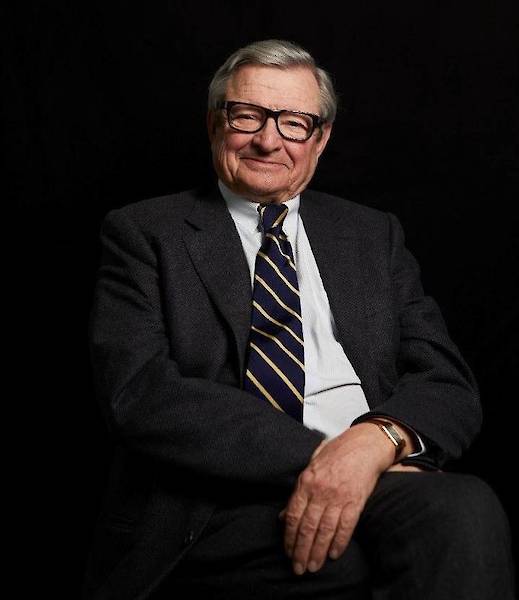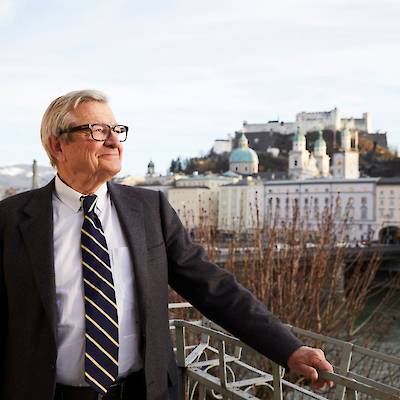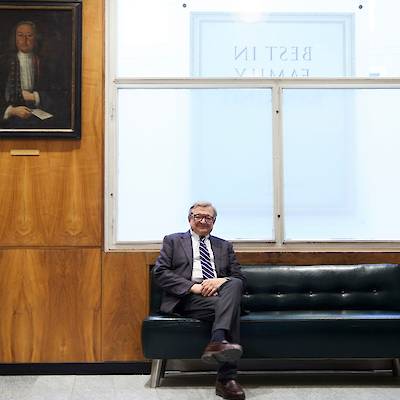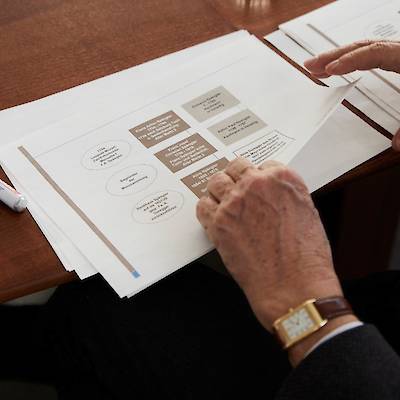Heinrich Spängler
Chairman of Austria’s longest-established banking house, the Bankhaus Spängler, the President of the Friends of the Salzburg Festival and a supporter of the Leogang Mining and Gothic Museum.
The name Spängler has been connected to the history of the city of Salzburg for a long time. How did your family, originating from South Tyrol, come to Salzburg?
Spängler: To put it brief, they came to Salzburg on mules and on bridle paths. About 300 years ago, my ancestors, who originally came from Taufers, used to organize the transport of salt from Salzburg to Venice and of wine, silk and spices from Venice to Salzburg. The first one to settle in Salzburg was Franz Anton Spängler, working as a cloth and silk merchant at the Alter Markt, the Old Marketplace in Salzburg’s city center. It was to take another 150 years until Carl Spängler went into the currency exchange business and, in 1828, started the bank that is still entirely owned by the family. Five family members hold a position in the bank today – on the supervisory board, on the board, and in the Family Office.
Your name, however, is not only closely connected to the city, but also to the Salzburg Festival. You yourself are the President of the Friends of the Salzburg Festival. How important is this event to the city?
Spängler: My family has always had a deep appreciation of art and culture and knew how important it was to show support. Especially in Salzburg, you can see how important a cultural identity is to a city and its people. When I took over the presidency of the Friends of the Salzburg Festival, I wasn’t particularly interested in culture. When the former president resigned, I rather took over the office of treasurer than that of president. That’s how I entered the cultural scene. I’ve been president for over 19 years now and I thoroughly enjoy it. The current Festival President, Helga Rabl-Stadler, and I work well together, too.
Apart from the Salzburg Festival, you are also supportive of the Leogang Mining and Gothic Museum. Is there a link between the two?
Spängler: I cannot remember a single time I talked to people about the cultural scene of Salzburg without mentioning the museum in Leogang as the best example for a successful realization of a regional museum. There are many people who come to Salzburg for the Festival, but they also long for other cultural experiences. Then, filled with pride and joy, I always recommend the Mining and Gothic Museum. And on top of what the museum has to offer, the nature you are surrounded with is unparalleled.
What is special about this museum?
Spängler: Definitely the continued effort and determination through which Hermann Mayrhofer worked his way from ground zero up to the top. It’s his open way of approaching people that made it possible to establish a museum of international standing in Leogang. I can’t even remember when I first met him – it’s been a long time – but I noticed his passion for the museum right away.
The Mining and Gothic Museum displays loans and exhibits from the Louvre, the National Gallery Prague, and the Leopold collection. That’s not necessarily what you expect from a museum in a village of 3,500 inhabitants.
Spängler: It’s exactly that – the high quality of the exhibits – that makes the museum what it is. And this high quality could only be achieved because Hermann Mayrhofer has completely devoted himself to this project and does not fear to approach people in his friendly manner. Many people already know that he has a goal in mind when he comes to speak to them. But it doesn’t feel presumptuous because he always has a way of raising your interest and you can feel that what he does is reasonable. That’s why we gladly support him and the museum.
How exactly do you show your support for the museum?
Spängler: I’ve always sent over people who are interested in supporting the cultural scene in the rural regions of Salzburg. And we also support the museum in providing loans from our coin collection. Our collection consists of approximately 1,000 pieces, the oldest exhibits originating from the year 1500. We choose to show support because we believe that the city doesn’t exist only for itself. Only if the regions manage to set an example can the city of Salzburg stay culturally relevant and serve as a model for the regions.
Heinrich Spängler is the chairman of Austria’s longest-established banking house, the Bankhaus Spängler, the President of the Friends of the Salzburg Festival and a supporter of the Leogang Mining and Gothic Museum.




